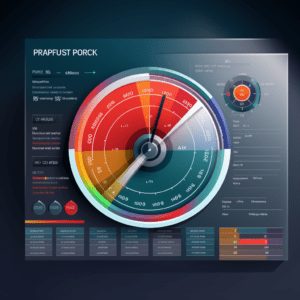KPIs for Product Managers: Are you tired of navigating the complex landscape of product management without a reliable compass? Look no further! In this blog, we’re delving deep into the world of Key Performance Indicators (KPIs) tailored specifically for product managers. Get ready to unlock the secrets of measuring success, armed with actionable insights and real-world examples that will reshape your product strategy.


KPIs for Product Managers
Table of Contents
Cracking the Code: Understanding KPIs for Product Managers
Without a map and a clear sense of direction, you’re bound to get lost. In the world of product management, KPIs serve as your compass, guiding you towards your objectives. They provide measurable, quantifiable data that help you gauge whether your product is on the right track or if adjustments are needed.
Demystifying KPIs: The What and Why
Key Performance Indicators (KPIs) are quantifiable metrics that reflect the performance of a product against its objectives. They offer insights into crucial aspects such as user engagement, conversion rates, customer satisfaction, and revenue generation. The strategic selection and tracking of KPIs empower product managers to make informed decisions, optimize processes, and drive product success.
Essential KPIs Every Product Manager Should Know


KPIs for Product Managers
- User Acquisition Cost (CAC): This KPI measures the cost of acquiring a single user. It’s calculated by dividing the total marketing and sales expenses by the number of new users gained. Keeping CAC in check ensures that your acquisition strategies are efficient and sustainable.
- Customer Lifetime Value (CLV): CLV estimates the total revenue a customer generates throughout their relationship with your product. A high CLV suggests strong user retention and successful monetization strategies.
- Churn Rate: Churn rate quantifies the percentage of customers who stop using your product over a specific time period. A rising churn rate raises red flags about user satisfaction and retention strategies.
- Activation Rate: This metric assesses the percentage of new sign-ups that successfully engage with your product. Effectiveness of your onboarding is measured by Activation rate.
- Monthly Active Users (MAU) and Daily Active Users (DAU): These KPIs indicate the number of users engaging with your product on a daily and monthly basis. Monitoring user activity trends guides your decisions about feature development and enhancements.
- Conversion Rate: Conversion rate measures the proportion of users who complete a desired action, such as signing up or making a purchase. A low conversion rate may indicate friction in the user journey.
- Net Promoter Score (NPS): NPS gauges customer satisfaction and loyalty by asking users how likely they are to recommend your product to others. A positive NPS indicates a strong user base.
- Average Revenue Per User (ARPU): average revenue generated by each user is calculated by ARPU. It helps you evaluate the monetization efficiency of your product.
Real-Life Illustrations: KPIs in Action
- E-Commerce Platform: For an e-commerce platform, tracking conversion rates and cart abandonment rates helps identify checkout process bottlenecks. An increasing churn rate might signal dissatisfaction with product quality or customer service.
- Mobile App: In the realm of mobile apps, monitoring DAU and MAU reveals user engagement patterns. Low activation rates might prompt changes in the onboarding experience, while a high churn rate might point to usability issues.
- Software as a Service (SaaS): For a SaaS product, understanding CLV guides pricing strategies. A declining NPS suggests areas for improvement in customer support or product functionality.
In today’s data-driven world, relying solely on intuition is a recipe for missed opportunities. KPIs provide the much-needed empirical evidence that guides decision-making. They help you identify growth areas, prioritize feature development, and fine-tune your product roadmap.
KPIs for Product Managers : Conclusion
KPIs for Product Managers: Product management is akin to a puzzle, and KPIs are the pieces that fit together to reveal the bigger picture. By selecting and tracking the right KPIs, you transform ambiguity into clarity, uncertainty into direction. Embrace the power of data, bid farewell to guesswork, and navigate your product’s journey with confidence.
As you embark on your product management odyssey, remember that KPIs aren’t just numbers; they’re insights, strategies, and success stories waiting to be written. So, equip yourself with these indispensable tools, decode the language of KPIs, and set sail towards a horizon brimming with achievement. Your product’s success story begins with these very metrics – the compass guiding you towards greatness.

